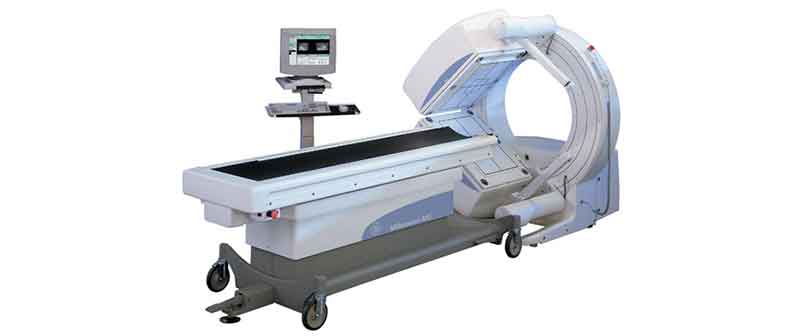SPECT and Gated SPECT software provides the following information
- Universal slice review
- Bullseye plot
- Cardiac ejection fraction
- Wall motion abnormality
- Myocardial viability
Clinical Indications
- Detection of Coronary Artery Disease
- Chest Pain Evaluation – Stress Test with uninterpretable ECG
- Assessment of borderline Coronary Stenosis seen in Angio
- Assessment of Myocardial Viability
- Cardiac fitness for non-cardiac surgery
Whole Body Bone Scan
A bone scan is a diagnostic imaging study which records the distribution of a radioactive tracer in the skeletal system. It is the most sensitive study available to pick up any pathology of the skeleton.
Clinical Indications
- Metastatic Bone leisons
- Primary Bone leisons
- Osteoid Osteoma etc.
- Infection/Inflammation
- Osteomyelities
- Sacroilitis
- Avascular Necrosis
- Trauma Stress fracture
- Metabolic Bone Disease
- Bone pain evaluation – low back ache evaluation
Renal Scan
Renal scans are performed to evaluate the differential renal function, the extraction and excretion function of the kidneys. Information about Glomerular Filtration Rate (GFR), tubular function and cortical morphology can be obtained by such scans.



